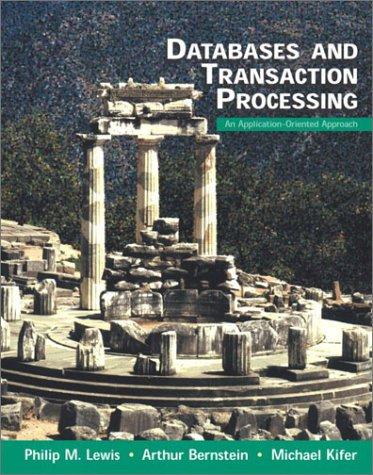Question
Consider a 1GByte memory that can be managed by either a bitmap or a linked list. The memory allocation unit is in units of n
Consider a 1GByte memory that can be managed by either a bitmap or a linked list. The memory allocation unit is in units of n bytes, which is some power of 2. Memory in the linked list is either marked as free or used (i.e. holes and segments). Assume that each node in the list requires 64 total bits (including a memory address, a length, and a pointer to the next linked list element). Also, make the (unrealistic) assumption that holes and segments are all 32KB (215 bytes) and that they alternate so that there is no coalescing of adjacent holes. It also means that each linked list element covers either a 32KB hole or a 32KB segment.
Determine how much memory each data structure uses (the bitmap will be in terms of n)

Determine what the break-even point is for the bitmap and linked-list methods. "Break-even" means the value of n for which they use the same amount of memory.
Consider a 1 GByte memory that can be managed by either a bitmap or a linked list. The memory allocation unit is in units of n bytes, which is some power of 2 . Memory in the linked list is either marked as free or used (i.e. holes and segments). Assume that each node in the list requires 64 total bits (including a memory address a length, and a pointer to the next linked list element). Also, make the (unrealistic) assumption that holes and segments are all 32KB ( 215 bytes) and that they alternate so that there is no coalescing of adjacent holes. It also means that each linked list element covers either a 32KB hole or a 32KB segment. A. Determine how much memory each data structure uses (the bitmap will be in terms of n ) B. Determine what the break-even point is for the bitmap and linked-list methods. "Break-even" means the value of n for which they use the same amount of memory. Consider a 1 GByte memory that can be managed by either a bitmap or a linked list. The memory allocation unit is in units of n bytes, which is some power of 2 . Memory in the linked list is either marked as free or used (i.e. holes and segments). Assume that each node in the list requires 64 total bits (including a memory address a length, and a pointer to the next linked list element). Also, make the (unrealistic) assumption that holes and segments are all 32KB ( 215 bytes) and that they alternate so that there is no coalescing of adjacent holes. It also means that each linked list element covers either a 32KB hole or a 32KB segment. A. Determine how much memory each data structure uses (the bitmap will be in terms of n ) B. Determine what the break-even point is for the bitmap and linked-list methods. "Break-even" means the value of n for which they use the same amount of memoryStep by Step Solution
There are 3 Steps involved in it
Step: 1

Get Instant Access to Expert-Tailored Solutions
See step-by-step solutions with expert insights and AI powered tools for academic success
Step: 2

Step: 3

Ace Your Homework with AI
Get the answers you need in no time with our AI-driven, step-by-step assistance
Get Started


